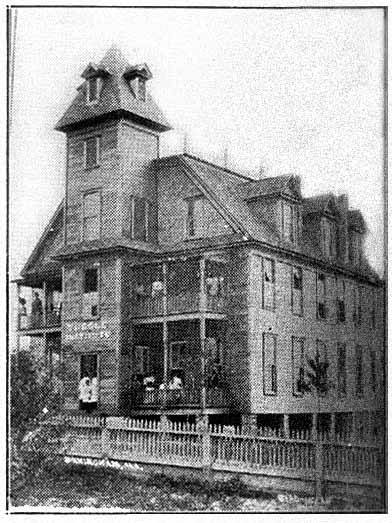Tuggle Institute: Difference between revisions
No edit summary |
Gene Wilson (talk | contribs) (→References: Corrected link with archived page.) |
||
| Line 28: | Line 28: | ||
* Birmingham Board of Education (c. 1982) “History of Carrie A. Tuggle School.” (mimeograph) | * Birmingham Board of Education (c. 1982) “History of Carrie A. Tuggle School.” (mimeograph) | ||
* United States Office of Education (1917) ''[http://books.google.com/books?id=qn5OAAAAMAAJ&pg=PA102 Negro Education: A Study of the Private and Higher Schools]''. Washington D. C.: Government Printing Office. p. 102 | * United States Office of Education (1917) ''[http://books.google.com/books?id=qn5OAAAAMAAJ&pg=PA102 Negro Education: A Study of the Private and Higher Schools]''. Washington D. C.: Government Printing Office. p. 102 | ||
* "[http://dbs.ohiohistory.org/africanam/page.cfm?ID=9106 Tuggle Institute to Have New Building]" (February 14, 1920) ''Cleveland Advocate''. Vol. 6, No. 50, p. 1 | * "[http://web.archive.org/web/20050208102027/http://dbs.ohiohistory.org/africanam/page.cfm?ID=9106 Tuggle Institute to Have New Building]" (February 14, 1920) ''Cleveland Advocate''. Vol. 6, No. 50, p. 1 | ||
[[Category:Tuggle Institute|*]] | [[Category:Tuggle Institute|*]] | ||
Revision as of 23:23, 23 March 2018
Tuggle Institute was a privately-run charity founded by social worker Carrie Tuggle on September 3, 1903. She wanted to provide safe housing and a good education to orphaned African-American children. The school was supported by the Court of Calanthe and Daughters of the Rising Sun secret women's organizations as well as by tuition and with funds from its trustees.
Around 1905 Tuggle hired Sam Foster to start a school band. It was there that he trained trumpeter Fess Whatley and taught him how to read music. By 1908 an advisory board made up of prominent white philanthropists, including Louis Pizitz, Hugo Black and James "Brother" Bryan, was involved in supporting the institute.
In the 1912-13 school year the institute had 146 students, of which 4 were in secondary grades and 120 were boarding at the school. Early industrial programs taught to upper-grade students included printing, woodworking and sewing. At that time the school operated under debt. The school building, judged by inspectors to be overcrowded and in poor repair, were mortgaged to make up the deficit between operating expenses and the approximately $1,800 in income from tuition and donations.
One of Foster's leading music students, trumpeter Fess Whatley, took over as band director at Tuggle. In 1915 a mass meeting was held to raise funds to retire the school's debts. Birmingham City Commissioner Arlie Barber spoke at the event.
On Lincoln's Birthday in 1920 the institute celebrated the completion of a new building, designed by Wallace Rayfield. James Dillard, pastor of South Side Baptist Church spoke, followed by R. A. Blount, grand chancellor of the Colored Pythians and W. W. Green, exalted ruler of the Colored Elks. In 1925 the Institute was located at 1227 9th Street North and also operated a community hospital around the corner at 800 12th Court North.
The Institute became informally associated with the Birmingham City Schools in 1926, but was forced to close in 1933. The Birmingham Board of Education bought the 15-acre site with its 13 structures in 1934 and renamed it Enon Ridge School. Two years later the Board honored Tuggle by renaming it Tuggle Elementary School. Tuggle herself is buried on the school grounds.
Principals
Notable alumni
- A. G. Gaston, entrepreneur
- Erskine Hawkins, musician
- Jo Jones, musician
- P. H. Polk, photographer
- Bob Range, musician
- Captain Sims, musician
- Fess Whatley, musician
References
- Birmingham Board of Education (c. 1982) “History of Carrie A. Tuggle School.” (mimeograph)
- United States Office of Education (1917) Negro Education: A Study of the Private and Higher Schools. Washington D. C.: Government Printing Office. p. 102
- "Tuggle Institute to Have New Building" (February 14, 1920) Cleveland Advocate. Vol. 6, No. 50, p. 1
